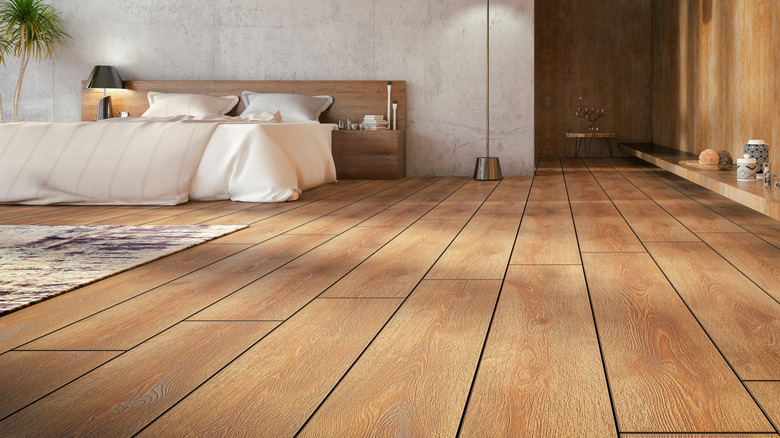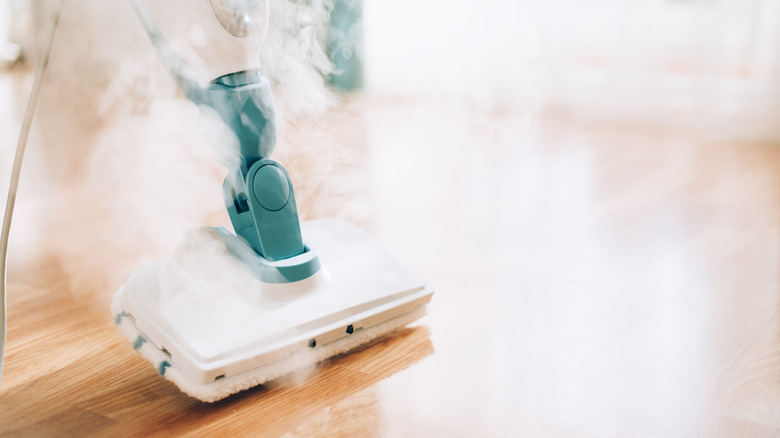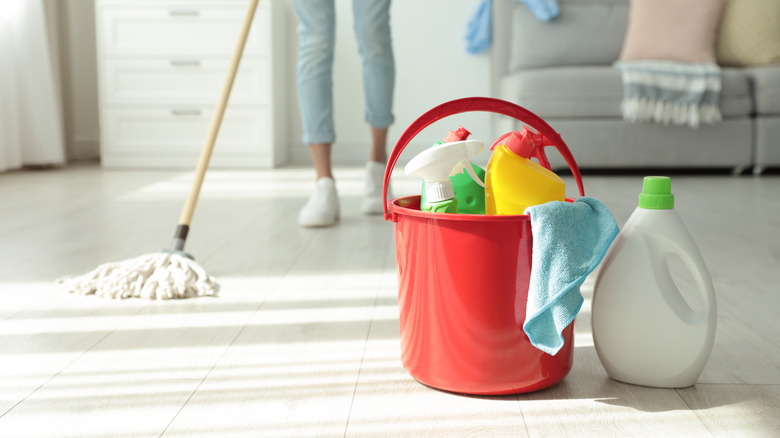Cleaning Materials You'll Want To Avoid Using On Engineered Hardwood Floors
Engineered hardwood floors are a fantastic, lower-cost option than traditional hardwood. However, just like their predecessor, they can get damaged if not maintained properly. Specifically, the use of rough cleaning tools, steam, and harsh cleaning products can all harm the surface of the floors. While it is possible to repair much of this damage, it may require standing and refinishing the engineered flooring. That's a complicated and sometimes expensive problem that's best avoided.
Engineered floors are typically made up of five or more layers of pressed plywood with a layer of real wood on top. While this makes them more durable than regular hardwood, the layers beneath can still expand, contract, and even shift over time, especially when there are chemicals used or changes in the moisture and humidity levels present. These surfaces should be protected with proper cleaning methods to help alleviate the risk of damaging them. Your best bet for cleaning these floors is always to follow the manufacturer's recommendations, which typically means using soft, non-abrasive products with as few chemicals as possible. When you learn how to clean engineered hardwood floors and what not to do, these surfaces can last for years and look fantastic.
Avoid rough cleaning tools and steam mops
The top layer of engineered floors is made out of wood, which means that any pressure or sharp object can create grooves or damage the surface. Avoid this by never using abrasive tools when cleaning. For example, if there's something stuck on the floor, don't use a brush with hard bristles to clean it off. Also, avoid applying any type of pressure with a scraping device, as this could create a deep gouge that requires sanding to remove.
Additionally, note that steam isn't ideal for engineered floors either. If you've purchased a steam mop, that high heat setting is exposing your floors to high humidity, which could cause the wood fibers to expand as they absorb the moisture. Further, the moisture can penetrate the various layers of the floor, which could cause the bond holding them together to break. This can lead to cracking and damage that's hard to fix.
Instead of using harsh applicators like these, choose a soft-bristled broom to remove as much of the dirt and debris as possible. You can also use a dry dust mop to help with dirt removal. When it's time to mop, use as little moisture as possible and a soft, microfiber mop head to clean the surface. Be careful that the bucket doesn't scratch the surface, either.
Avoid harsh cleaning products
The cleaning products you use on your floors matter just as much as the tools. Avoid any type of cleaning agent that's harsh, including those that contain bleach, ammonia, or degreasing agents. These types of products can damage the exterior finish on the flooring, often causing discoloration or breaking down the protective stain and coatings present. That puts the surface's integrity at risk over time and can cause significant staining. Also, avoid the use of waxy cleaners and oily soaps. Though these may seem like a good way to brighten the floor and add protection, that's not generally the case. Instead, they could damage the surface and penetrate into the layers of the wood, once again causing significant damage to the structural integrity of the floor.
There are alternative cleaning options for engineered hardwood floors. The safest option is to use water without any soap in it, which can be applied with a clean mop and dried well. If you want a deeper clean, a DIY wood floor cleaner that involves mixing a small amount of white vinegar into a bucket of water is likely to do just as great of a job at removing discoloration and dirt as a commercial product. However, when you need something stronger due to a stain, look for a cleaner that's specifically designed for engineered flooring.


